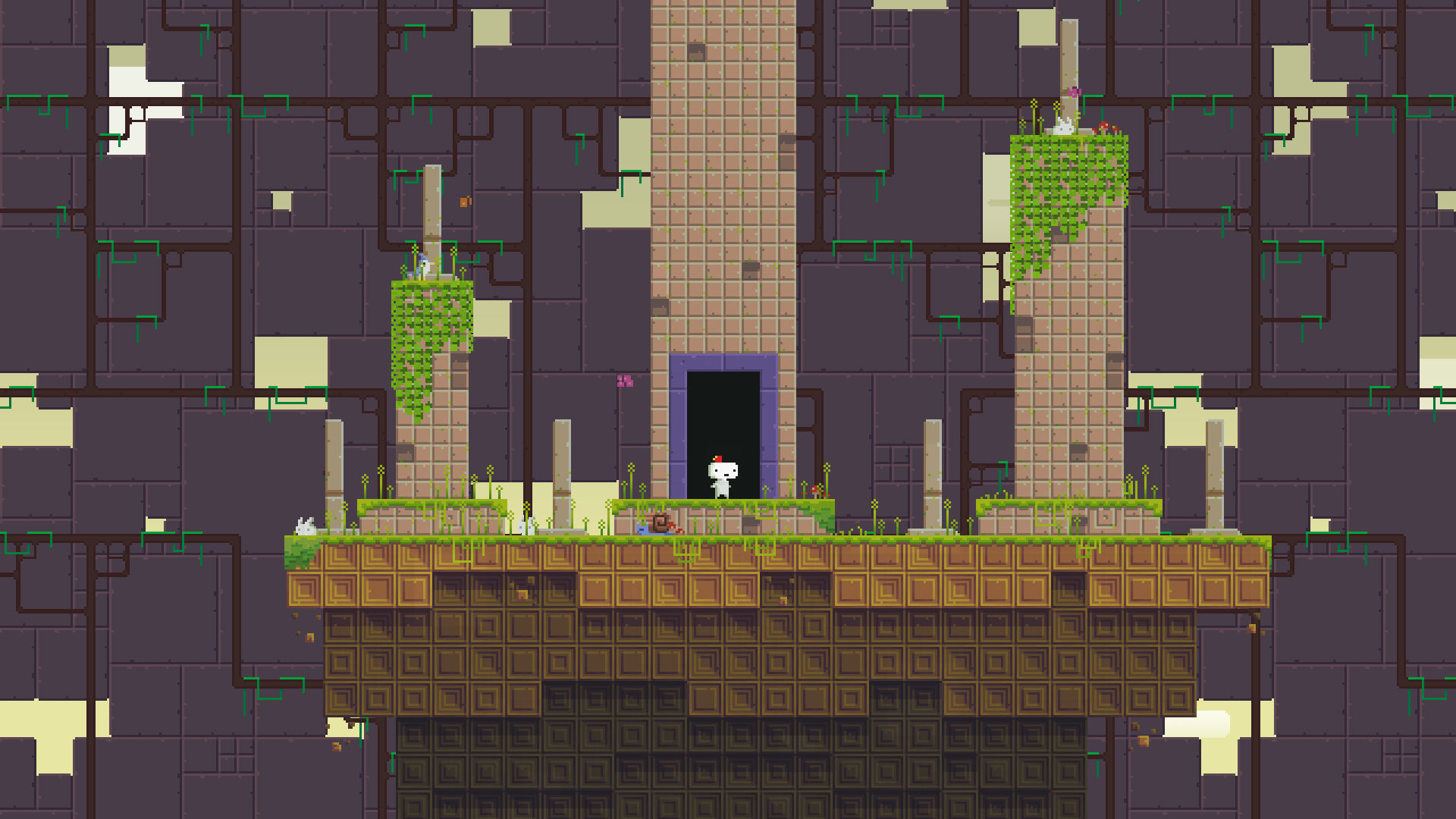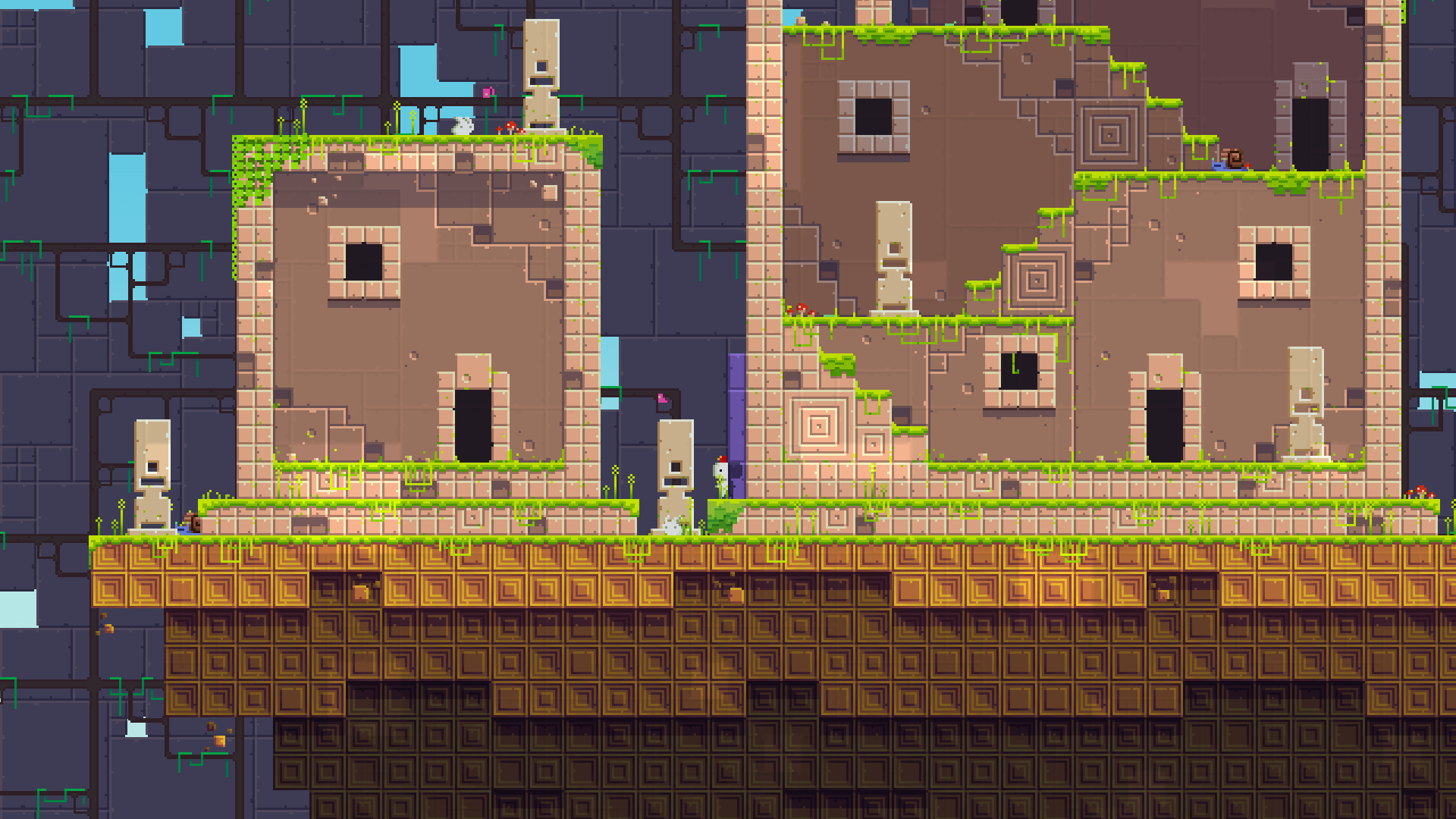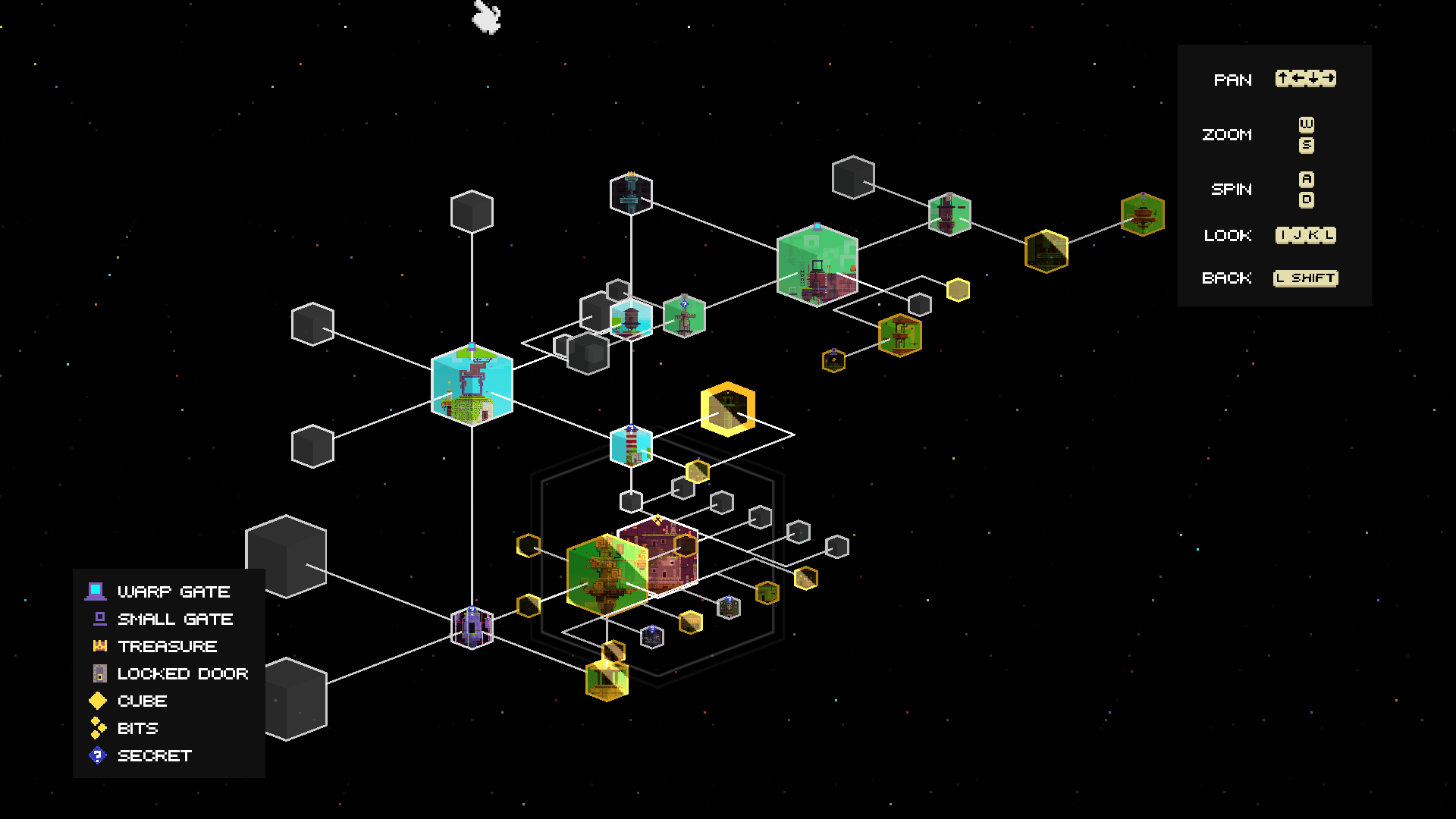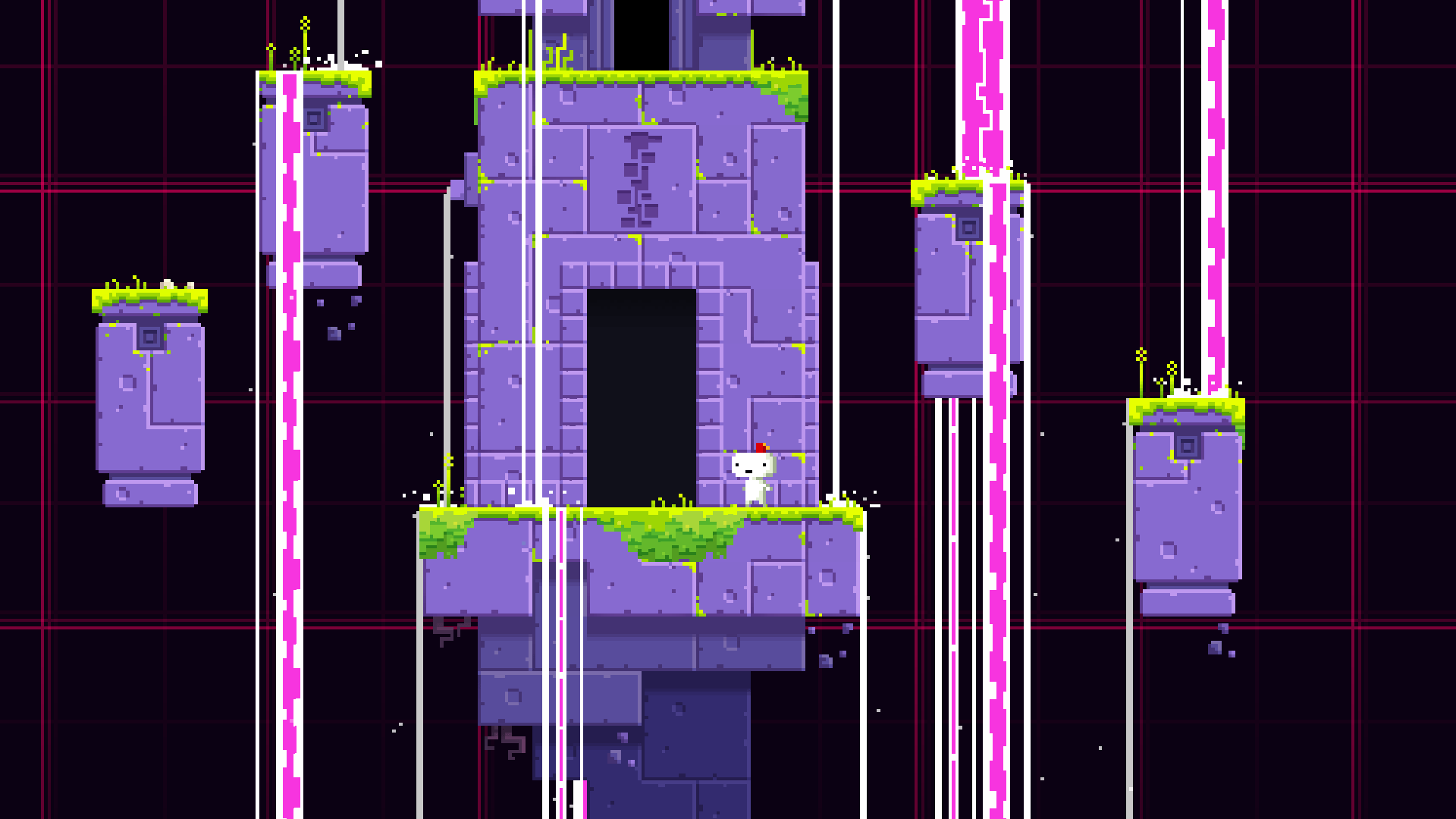Name of Game: Fez
Developers: Phil Fish, Polytron Corporation, and Blitworks
Platform: Xbox 360, Windows, Linux, OS X, Playstation 3/4, and Nintendo Switch
Target Audience:
Fez has pretty straightforward puzzles and beautiful artwork which makes me believe that the game is targeted towards casual players who are more interested in a pleasant gaming experience than an intense logical challenge. One thing that stood out to me was the game’s choice to use the arrow keys for movement rather than the WASD keys. I find that the WASD keys are much more intuitive to the existing mental model of most PC gamers while the arrow keys might be more intuitive for people who haven’t played many games on PC. For this reason, I am again led to believe that the game was designed for people who play games very casually if at all.
Formal Elements:
Fez looks like a traditional 2D platformer, but the twist is that you can rotate the world in a third dimension to get a different perspective of the terrain. It uses this perspective switching to create a variety of puzzles that require the player to switch between different views in order to make jumps between platforms, find hidden doors, and collect cubes. Collecting cubes is the main objective of Fez as you need a certain number of cubes to be able to progress to unlock the gateway to the next chain of worlds. In pursuit of more cubes, you will find yourself going through different chains of worlds that are linked together by a series of doors. An interesting aspect of Fez is that there are no enemies or consequences of the players missing a platform. Overall, I find that the game’s mechanics build towards a very relaxed aesthetic of progressing through puzzles at your own pace and enjoying the world atmosphere.


Types of Fun:
Fez offers fun through challenge, sensation, and discovery. While I only played through the first world, I did find that the puzzles gradually became more difficult. I can imagine that in the future it will be a moderate challenge to progress and complete all of the puzzles. I felt a lot of fun through sensation when playing the game because there was so much beautiful pixel art. The worlds were filled with a variety of cute little creatures (butterflies, caterpillars, snails, and lizards) that served no purpose other than to be decorative. The music and sound effects were also very pleasant to the ear and added to the wondrous vibe of the game. Lastly, there is fun through discovery as many of the most memorable moments in the game for me were walking through a door only to find an entirely new world to explore.
Moments of Success/Failure:
One major failure of the game was the controls. The mappings were very awkward with the arrow keys being used for movement and the WASD keys being used to change the perspective. I kept wanting to use the WASD keys to move but instead ended up shifting perspectives which was really disorienting and made me mess up jumps multiple times. Another problem was that they used the shift key for progressing through dialogue. This resulted in me triggering the sticky keys multiple times and needing to disable that shortcut in order to not get interrupted every few seconds of text. Lastly, there were just too many buttons and controls for the game. There was the tab key for inventory, shift key for text, left-control key for interactions, WASD keys for perspective changes, arrow keys for movement, escape key for map, and more. It took me a few seconds to figure out what key to press whenever I wanted to actually do something.
Another failure was the map of the game. As fun as it was to discover new worlds, it was too easy to get lost down a chain of worlds without a quick way of getting back to the start.

A major success of the game was that the onboarding process was fun and effective. I had to carry out the action in order to progress even if I skipped the explanation text. Despite the game having too many controls, it gives the player a little helper buddy that follows them around and reminds them of what button to press when they inevitably forget.
Overall Reflection on Puzzles:
The puzzles weren’t too challenging which is nice because the game is meant to be a chill experience, with a lot of focus on the artwork and sound design of the game. In that sense, the puzzles added to the chill experience. Most of the challenge with the puzzles came from the convoluted controls which ultimately took away from the experience.



